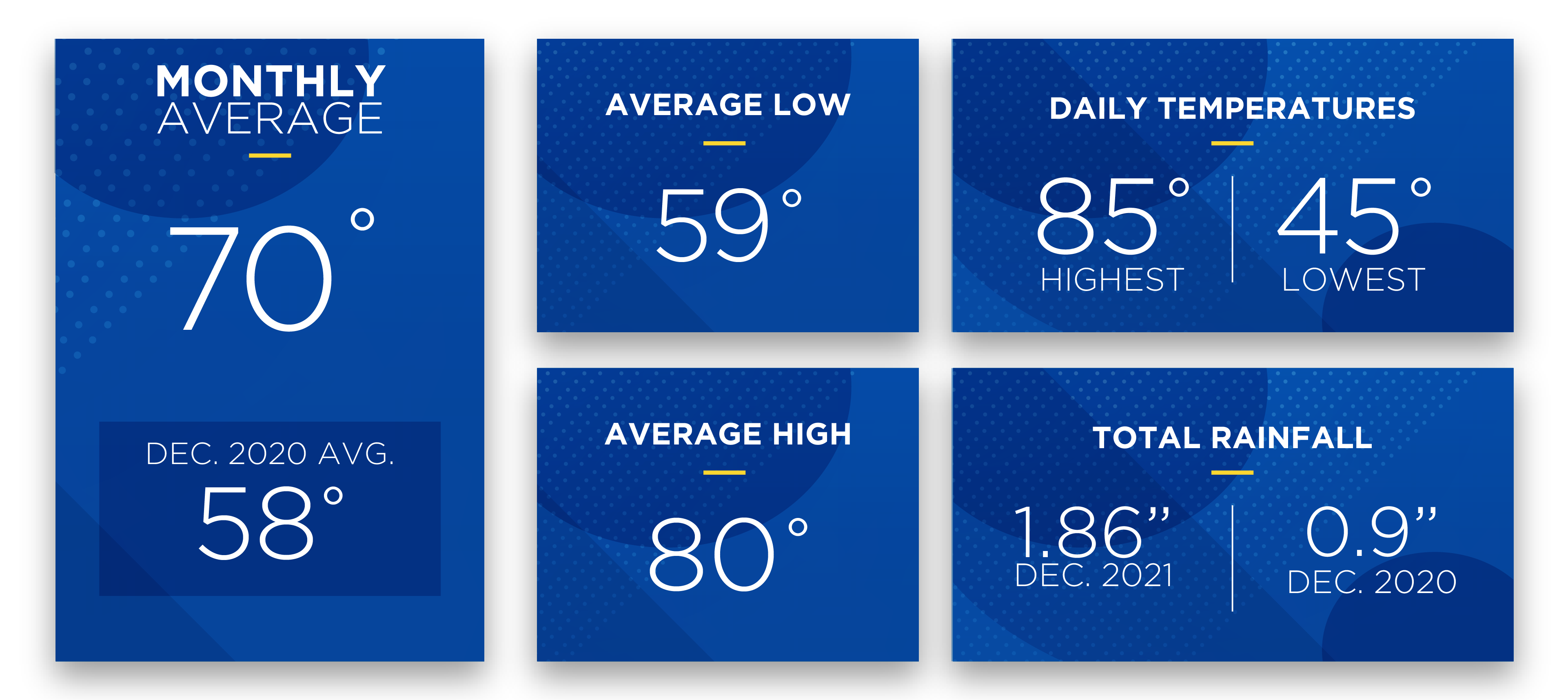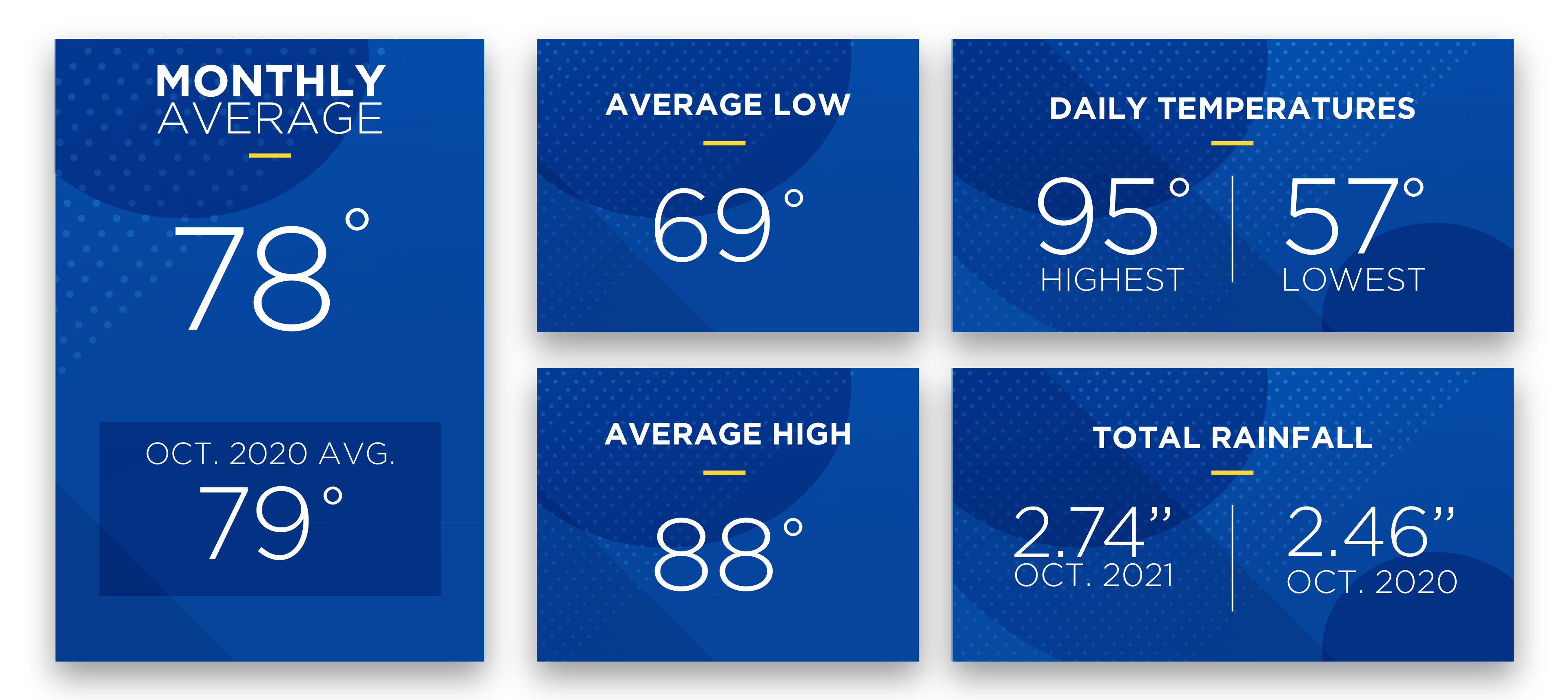December 2021 Sunshine State Stats
December 2021 weather brought lots of sunshine, little rain and no snow for Christmas in Central Florida. The average temperature for the month was 70 degrees, which was 4 degrees warmer than the average temp in November 2021, and a whopping 12 degrees warmer than the average temp in December 2020. The average high temperature was 80 degrees while the average low was 59.
The highest daily recorded temperature in December was 85 degrees and the lowest was 45 – both the highest and lowest recorded temps were the same as November 2021. Rainfall decreased this month to 1.86 inches and is below December’s average of 3.19 inches.
In December 2021, 18 days of the month the daily hig temperature reached 80 degrees or over. Evenings and mornings were cool with lows that averaged in the 50s and 60s with some extremes into the 40s.
Members may notice their energy usage for December 2021 increase from November 2021 if the warmer daily temps and cooler night and mornings had you running both cooling and heating during the month. Daily temperature fluctuations, along with Florida’s humidity mean HVACs will run for longer periods of time and more frequently to keep temperatures stable inside the home. Wide daily temperature fluctuations also increase HVAC usage. In December 2021, the largest daily temperature fluctuation was 29 degrees.
January forecast:
The Old Farmer’s Almanac predicts winter in Florida will be colder than usual. Prepare for cold or freezing temperatures in January and into early February. Precipitation will also be above average.
With temperatures running colder than average, your HVAC (heating, ventilation and air conditioning) unit may run longer and more frequently this year than in previous years. Now is the time to schedule an HVAC service call with a licensed technician. Read December 2021 SECO News to learn more about scheduling a winter HVAC service.
For January 2021, The Old Farmer’s Almanac predicts the temperature will average 55 degrees for the month, which is 5 degrees below average. Precipitation is forecast to be 2.5 inches for the month, which is average. 3 inches above average. Look for the month to start off warm with daily highs in the low 80s. A cold front in the second week of January brings temperatures down. Lows will dip into the 50s and 40s.
To check historical usage, log into SmartHub to view past bills and consumption charts. If your usage is high, SECO offers several energy-efficiency tools to help you identify energy wasters. Take the Home Energy Assessment to receive a detailed email tailored to your home’s features and lifestyle. The energy-saving advice will provide low-cost ways to decrease your usage – and your electric bill.
To easily calculate how much energy your appliances, lighting, electronic devices, and other energy-using items in your home consume, use the Energy Estimator.






